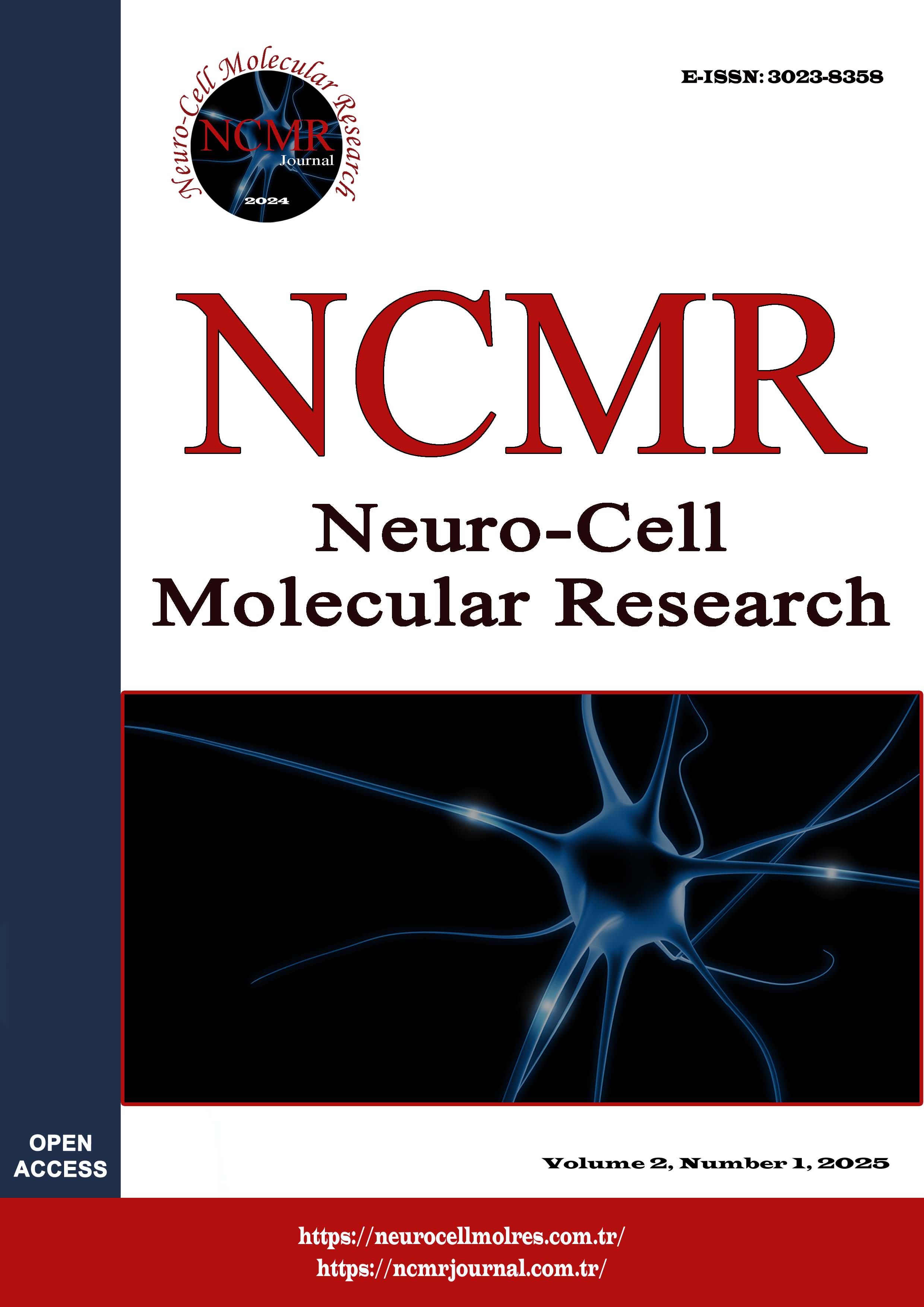Gene Regions and Methods Used in Molecular Characterization of Fasciola Species
DOI:
https://doi.org/10.5281/zenodo.15311805Keywords:
ITS, nad, cox1, F. hepatica, F. giganticaAbstract
Fasciola species are zoonotic trematodes that cause fascioliasis in a wide range of hosts, including humans and ruminants such as camels, cattle, sheep and goats. The parasite causes significant economic losses in the livestock sector. Although its effect on human health has previously been understated, recent cases of fascioliasis have sparked increased interest among researchers globally. These situations make it essential to precisely characterize species of Fasciola. However, available phenotypic approaches fail to represent the diversity of Fasciola species in a summarized manner. In this context, the use of molecular approaches offers important advantages for the characterization of Fasciola species. Current molecular techniques greatly facilitate the elucidation of the biology, epidemiology and genetics of the parasite. In this article, the molecular markers used for Fasciola species, the properties of these markers, their intended use and the molecular techniques used to analyze these markers are discussed.
Downloads
References
Hoang Quang V, Levecke B, Do Trung D, et al. Fasciola spp. in Southeast Asia: A systematic review. PLoS Negl Trop Dis. 2024;18(1):e0011904. https://doi.org/10.1371/journal.pntd.0011904
Drescher G, Vasconcelos TCB, Belo VS, et al. Serological diagnosis of fasciolosis (Fasciola hepatica) in humans, cattle, and sheep: a meta-analysis. Front Vet Sci. 2023;10:1252454. https://doi.org/10.3389/fvets.2023.1252454
Hammami I, Ciuca L, Maurelli MP, et al. First morphometric and molecular characterization of Fasciola spp. in Northwest Tunisia. Parasitol Res. 2023;122(11):2467–76. https://doi.org/10.1007/s00436-023-07933-0
Nolan MJ, Cribb TH. The use and implications of ribosomal DNA sequencing for the discrimination of digenean species. Adv Parasitol. 2005;60:101-63. https://doi.org/10.1007/s00436-023-07933-0
Chan AHE, Chaisiri K, Saralamba S, et al. Assessing the suitability of mitochondrial and nuclear DNA genetic markers for molecular systematics and species identification of helminths. Parasites Vectors. 2021;14:233. https://doi.org/10.1186/s13071-021-04737-y
Chontananarth T, Parawat J. Development of cytochrome B, a new candidate gene for a high accuracy detection of Fasciola eggs in fecal specimens. Vet Parasitol. 2019;274:108922. https://doi.org//10.1016/j.vetpar.2019.108922
Shoriki T, Ichikawa-Seki M, Suganuma K, et al. Novel methods for the molecular discrimination of Fasciola spp. on the basis of nuclear protein-coding genes. Parasitol Int. 2016;65(3):180-3. https://doi.org/10.1016/j.parint.2015.12.002
Rach J, Bergmann T, Paknia O, et al. The marker choice: Unexpected resolving power of an unexplored CO1 region for layered DNA barcoding approaches. PLoS One. 2017;12(4):e0174842. https://doi.org/10.1371/journal.pone.0174842
Elliott T, Muller A, Brockwell Y, et al. Evidence for high genetic diversity of NAD1 and COX1 mitochondrial haplotypes among triclabendazole resistant and susceptible populations and field isolates of Fasciola hepatica (liver fluke) in Australia. Vet Parasitol. 2014;200(1-2):90-6. https://doi.org/10.1016/j.vetpar.2013.11.019
Liu GH, Gasser RB, Young ND, et al. Complete mitochondrial genomes of the 'intermediate form' of Fasciola and Fasciola gigantica, and their comparison with F. hepatica. Parasites Vectors. 2014;7:150. https://doi.org/10.1186/1756-3305-7-150
Ai L, Chen MX, Alasaad S, et al. Genetic characterization, species differentiation and detection of Fasciola spp. by molecular approaches. Parasites Vectors. 2011a;4:1-6. https://doi.org/10.1186/1756-3305-4-101
Ai L, Weng YB, Elsheikha HM, et al. Genetic diversity and relatedness of Fasciola spp. isolates from different hosts and geographic regions revealed by analysis of mitochondrial DNA sequences. Vet Parasitol. 2011b;181(2–4):329–34. https://doi.org/10.1016/j.vetpar.2011.03.057
Itagaki T, Tsutsumi KI, Ito K, et al. Taxonomic status of the Japanese triploid forms of Fasciola: comparison of mitochondrial ND1 and COI sequences with F. hepatica and F. gigantica. J Parasitol. 1998;84(3):445-8. https://doi.org/10.2307/3284510
Moazeni M, Sharifiyazdi H, Izadpanah A. Characterization of Fasciola hepatica genotypes from cattle and sheep in Iran using cytochrome C oxidase gene (CO1). Parasitol Res. 2012;110:2379-84. https://doi.org/10.1007/s00436-011-2774-9
Asadpour M, Sharifiyazdi H, Moazeni M, et al. Molecular characterization of Fasciola spp. from a donkey (Equus asinus) using partial sequencing of cox1 and nad1. Iran J Parasitol. 2020;15(4):549-58. https://doi.org/10.18502/ijpa.v15i4.4860
Siribat P, Dekumyoy P, Komalamisra C, et al. Molecular identification of Fasciola spp.-representative samples from Thailand based on PCR-RFLP. J Trop Med Parasitol. 2018;41(1): 1-7.
Hachariz O, Sayers G. Fasciola hepatica - Where is 28S ribosomal RNA? Exp Parasitol. 2013;135(2):426-9. https://doi.org/10.1016/j.exppara.2013.07.026
Alajmi RA. Molecular characterization of Fasciola flukes using mitochondrial 28S rRNA gene in Naimi Saudi sheep. Saudi J Biol Sci. 2019;26(1):112-7. https://doi.org/10.1016/j.sjbs.2017.06.010
Choudhary K, Verma AK, Swaroop S, et al. A review on the molecular characterization of digenean parasites using molecular markers with special reference to ITS region. Helminthologia. 2015;52(3):167-72. https://doi.org/10.1515/helmin-2015-0031
Amer S, Dar Y, Ichikawa M, et al. Identification of Fasciola species isolated from Egypt based on sequence analysis of genomic (ITS1 and ITS2) and mitochondrial (ND1 and COI) gene markers. Parasitol Int. 2011;60(1):5-12. https://doi.org/10.1016/j.parint.2010.09.003
Shu FF, Lv RQ, Zhang YF, et al. Characterization of Fasciola samples by ITS of rDNA sequences revealed the existence of Fasciola hepatica and Fasciola gigantica in Yunnan Province, China. J Parasitol. 2012;98(4):889-90. https://doi.org/10.1645/GE-2974.1
Mahami-Oskouei M, Dalimi A, Forouzandeh-Moghadam M, et al. Molecular identification and differentiation of Fasciola isolates using PCR-RFLP method based on internal transcribed spacer (ITS1, 5.8S rDNA, ITS2). Iran J Parasitol. 2011;6(3):35-42
Ichikawa-Seki M, Peng M, Hayashi K, et al. Nuclear and mitochondrial DNA analysis reveals that hybridization between Fasciola hepatica and Fasciola gigantica occurred in China. Parasitology. 2017;144(2):206-13. https://doi.org/10.1017/S003118201600161X
Tadayon S, Sharifiyazdi H, Moazeni M, et al. Molecular differentiation of Fasciola species and characterization of genetic diversity of F. gigantica using NADH dehydrogenase I (ND1) gene in the endemic areas of Iran. Iran J Parasitol. 2015;10(1):9-18
Semyenova SK, Morozova EV, Chrisanfova GG, et al. Genetic differentiation in eastern European and western Asian populations of the liver fluke, Fasciola hepatica, as revealed by mitochondrial nad1 and cox1 genes. J Parasitol. 2006;92(3):525-30.





